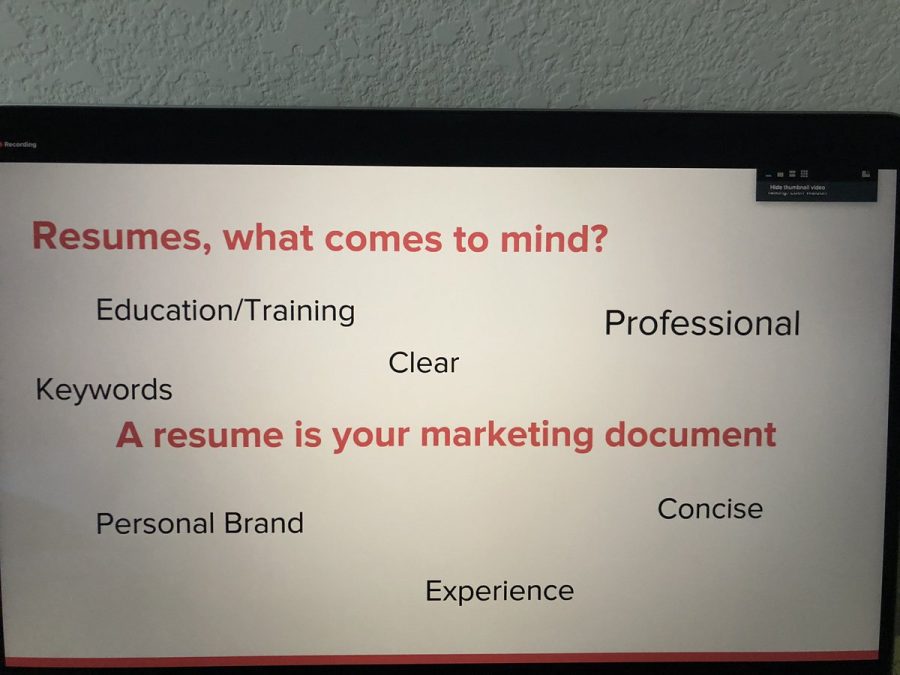Advice and tips when constructing a resume
Slide from Career Coach Eden Waldon. Waldon displayed the importance of marketing yourself.
A Resume Writing and Design Workshop event was hosted to give tips and advice for students as to how they should construct their resumes, look for jobs and more, on Dec. 1.
Having the skills to write a strong resume is not something everyone can successfully do.
“I am passionate about resume writing, supporting the writing and really building strong resumes because that is really the tool to get your foot in the door for an interview and maybe a virtual interview,” said Career Coach Eden Waldon.
The event allowed those who were present to participate and ask questions which allowed Waldon and other hosts to go more in-depth on the material being covered.
After introductions, Waldon spoke on exactly what is necessary on a resume and what is not.
A slide was shared that included keywords to keep in mind when creating a resume. Some being education, training, experience and personal brand.
“A little pro tip, I actually advise people to include the city they’re located in but also put remote near that city, up at the contact information, to show that you can work remote as well,” said Waldon.
The agenda for this event was to go over resume fundamentals, resume content, stylized resumes and some bonus information.
Something to keep in mind is employers don’t necessarily spend a minute or even 15 seconds looking at your resume. In fact, most of the time they spend about six to 10 seconds looking at the content on your resume.
Waldon expresses the importance of the positioning and style of your resume.
“Pay attention to how you’re placing your experience, your skills, your education so the employer and company can see that clearly,” said Waldon.
Along with this, it’s vital to avoid common grammar and spelling mistakes, to be consistent and to keep the resume at the length of one page.
As for the way one can format their resume, Waldon displayed a chronological resume and a modified chronological resume.
“What a modified chronological resume does is it separates your experience sections to highlight the most important sections,” said Waldon.
To finish off the resume, one can include a summary statement which tends to be one of the first things an employer will read.
“It gives more information to who you are, other than maybe an objective,” said Waldon. “This shows how you want to be portrayed in that first highlight of the top portion of the resume.”
This area of your resume should be about three to four sentences and answer who you are and why you fit the criteria for the job.
“Remember, no I statements and no pronouns to stay professional in that sense of getting straight to the point of stating who you are,” said Waldon.

